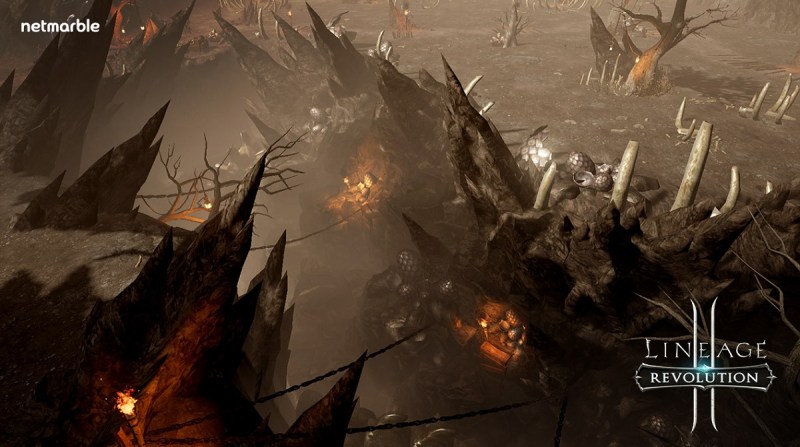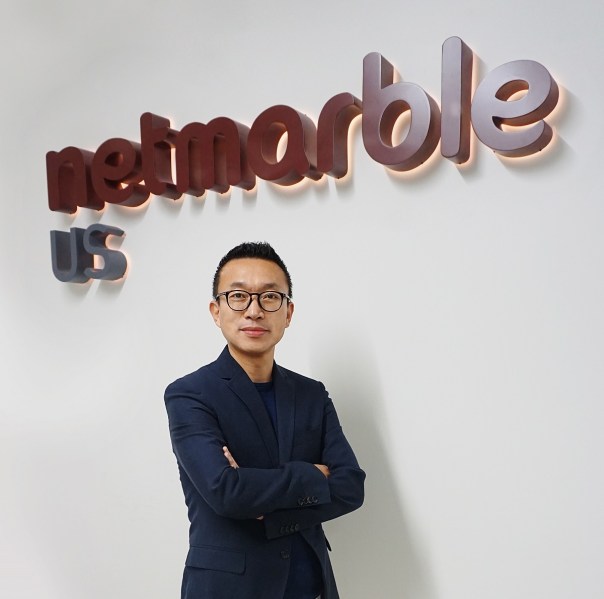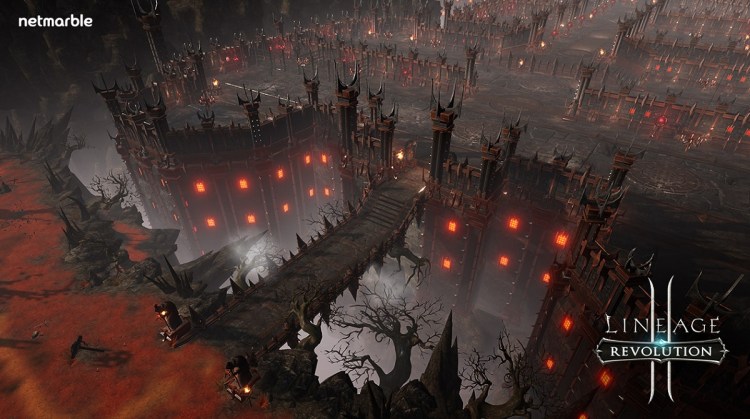
Above: A friendly Orc in Lineage 2: Revolution.
GamesBeat: What do you think about your older games and how soon you should sunset them? Do you need to think about that, or can you operate them forever?
Sim: In our case, some of our games are still very popular in Korea, very popular in other parts of Asia like Taiwan and Thailand. They’ve been around for five years or more. We think that if we manage our games correctly, supporting them with new content and live operations, even mobile games can sustain for more than four or five years. Marvel Future Fight has been going for four years. It depends on our capability for live operations and content updates. We believe there’s no hard rule about shutting down a mobile game in three or four or five years.
Our background is in the PC free-to-play market. Some PC games have sustained for more than 10 years. That capability helps us a lot in managing free-to-play games on mobile. There’s a similarity in how users consume content and what they’ll accept. We’ll keep working on that.
GamesBeat: What do you think about the battle royale genre as an opportunity on the mobile side?
Sim: One of our strategies is building a diverse team and a diverse genre portfolio. We have action-RPG games, MMORPG games, casual board games, fighting games. Battle royale is an interesting genre. We’re keeping watch on that. We’ve demonstrated something during G-Star last year, an MMORPG style of game with a battle royale mode. It’s called A3: Still Alive. It had a good reception from players and we got a lot of press interest. It’s an interesting genre, so we’ll keep trying. But we’re not going to exactly follow any other game. We’ll try something more innovative. We need to prepare for future trends or we won’t be successful.
GamesBeat: Are you still confident in the mobile market overall? Is that still where the growth is?
Sim: It’s getting more and more competitive. Based on the AppAnnie reports, a new game launched in 2018 that can make it into the top 20 grossing chart is a very rare case. Not many newly-launched games have cracked the top 20. Familiar games are moving up and down. It’s a very challenging market. But we believe that if we bring new kinds of fun with hybrid genres or different kinds of IP – we’re working on a game with BTS, for example – we’ll have a chance. We’ll keep innovating or we’re not going to succeed.

Above: Lineage 2: Revolution is a pretty game.
GamesBeat: Is the Chinese market starting to be more predictable and stable? Or is it still a difficult one?
Sim: It’s hard to say right now. You may know that the Chinese government is starting to approve more games. We’ve already preparing some games for release in China. We’re finishing up culturalization and we’re waiting for approval. So we wait. The feeling is positive for now.
GamesBeat: They’ve been approving some smaller games first.
Sim: Right. But we think it could be coming in the future eventually. We’re doing the culturalization and localization work to prepare for launch in China.
GamesBeat: As far as acquisitions, if you make them, what is the pattern for you? What are the kinds of things you’re looking for?
Sim: If you look back on our previous acquisitions, like Jam City—our subsidiary studios are strong in certain genres, like action-RPG or MMORPG or casual board games. But western-style puzzle games are different from our existing specialties. Jam City was very strong in that genre, so that’s why we invested there. If you look at Kabam, Marvel Contest of Champions looks like an action game, but underneath, it’s more like an RPG. You collect heroes and make them stronger. It has a lot of community gameplay, like alliance wars and alliance quests. It’s very much like an RPG. Kabam’s team is very strong in that western style of RPG, so that’s why we acquired Kabam. In all these things we try to create some synergies through mergers and acquisitions. We’ll keep looking for new opportunities.
GamesBeat: And there’s always Nexon, right?
Sim: [laughs] We also invested in Big Hit Entertainment. They’re the music label behind BTS, the K-pop idol group. BTS could be a big IP in synergy with games. Every time we invest we think about that kind of synergy, filling in a piece that we’re missing.

Above: Simon Sim of Netmarble US.
GamesBeat: Are you looking seriously at things like blockchain and cryptocurrency?
Sim: Internally we’ve researched those kinds of things. We’re interested. But it’s a matter of timing and what kind of synergy we can create. It’s a big trend in IT, one of the biggest ones, so we’ll keep following it. AI is another one. Machine learning-based AI is very popular. That’s another trend we’re very closely looking into. We’re building an internal AI lab. It’s getting bigger and bigger. The head of our lab has been working with IBM’s Watson machine learning and AI. We’ve brought him in to lead up our technology, all the AI development for Netmarble’s teams. We’ll keep following those kinds of technology trends.
AI has become more of a basic element of game technology. Testing is a huge part of game development, of course. In mobile games we need to test a lot of different device specs, because the Android market is so fragmented. For testing automation we use AI technology, as well as marketing automation. We also use AI technology to develop real time game opponents. There are lots of areas where AI technology can help our development and marketing. It’s more like an infrastructure technology than an application-level technology. We’ll keep researching.
GamesBeat: Are VR and AR interesting to you as new areas of exploration?
Sim: It’s hard to say what’s more or less important. In VR and AR, if we find a good fit with content, they might be getting bigger, but it’s a matter of finding which content is a good fit. As AR and VR technology becomes more popular, we’ll keep considering the question. We’ll keep trying. Some of our games already have AR features, like fighting in an AR view. If we fight together, we might see the same background from the perspective of your smartphone or my smartphone. We’ll keep testing those features and seeing how users accept them, trying to figure out how to deliver new kinds of fun to build more popular games.

